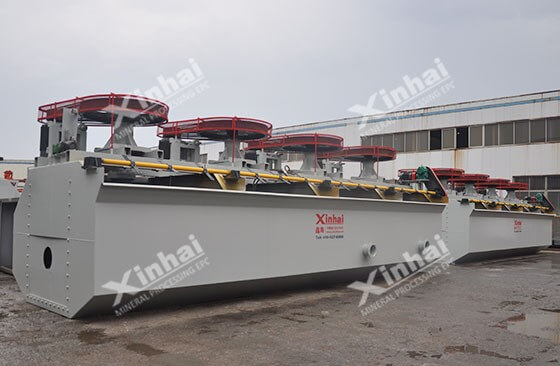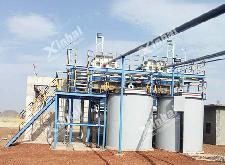

Warm Tip: If you want to know more details about equipment, solutions, etc, please click the button below for free consultation, or leave your requirements!
In this post you're going to know about the common gold mining process-froth flotation.
This guide includes:
What is froth flotation
Where to use froth flotation
The process of froth flotation
So if you want to learn about froth flotation, you'll love this post.
Let's dive right in!
Froth flotation method is a kind of gold mining process that makes the useful minerals adhere to the bubble for achieving the gold separation with the flotation reagents based on the difference of physical and chemical properties of mineral surface. The froth flotation method can be used to deal with the nonferrous ores, such as copper, lead, zinc,sulfur and molybdenum. Some ferrous metals, rare metals and some nonmetallic ores, such as graphite, apatite, are also separated by the froth flotation method.
Froth flotation method is one of the most widely used methods for treating pulse-gold ore in gold concentrator. In most cases, froth flotation method is used in the treatment of gold bearing ores with high reproducibility of sulfide minerals with good separation effect.
The froth flotation process can not only enrich maximum gold into the sulphide mineral concentrate, but also discard the tailings, so the processing cost is low. Besides,froth flotation method can also be used to polymetallic gold mining, such as gold-copper, gold-lead, gold-antimony, gold-copper-lead-zinc-sulfur ores. For this kind of ores, the froth flotation method can effectively identify and select various gold-bearing sulfide concentrates, which is beneficial to the comprehensive recovery of mineral resources.
In addition, for so-called"refractory ores" that cannot be treated directly by amalgamation and cyanidation, a combined process including froth flotation method is also required. Of course, the forth flotation method also has its limitations. It is difficult to obtain stable flotation foam after mixing for coarse embedded and gold ore with particle size greater than 0.2 mm, and for quartz gold ore without sulfide, so the froth flotation method is difficult to be adopted.

In recent years, the froth flotation method used in the gold mining has made great progress, which is mainly reflected in the innovation of technological process, the development of new reagents, the improvement of design and so on.
Using step grinding- step separation process is the development trend froth flotation method used in the gold mining at present. Most gold mining plants in foreign countries usually use two or even three stages, while some gold mining plants in China adopt two stages grinding-two stages separation process. The gold recovery is increased by 2%- 6%; Changing the reagent system and using a variety of mixed reagents to improve the gold mining effect.
The froth flotation method used in the gold mining mainly includes:
After washing and classifying, the mineral is mixed evenly by agitation tank drum and sent to the flotation machine.
The goldmine generally uses sodium carbonate as the regulator, so that the gold is floated.
At the same time, using the butyl xanthate and ammonium dibutyldithiophosphate as the collectors, which can separate the gold powder from the slag,and produce the gold concentrate powder. The gold concentrate after froth flotation method generally contains more water, so it is necessary to use the high-efficiency thickener to reduce the concentration water to the standard set by the state.
Since the froth flotation method can only concentrate the gold to the maximum extent in various sulfide concentrates and cannot ultimately obtain the finished gold. therefore, most gold mining plants adopt the froth flotation process as a process of the combined process.
Last: 4 Common Problems and Solutions Met in the Flotation Cell Installation and Commissioning
1The Common Gold Mining Process – Gravity Separation Method
 0
0
 5163
5163
2How To Extract Gold From Sand?
 6
6
 6326
6326


What Are the Differences Between CIP and CIL?
 11185
11185
 0
0